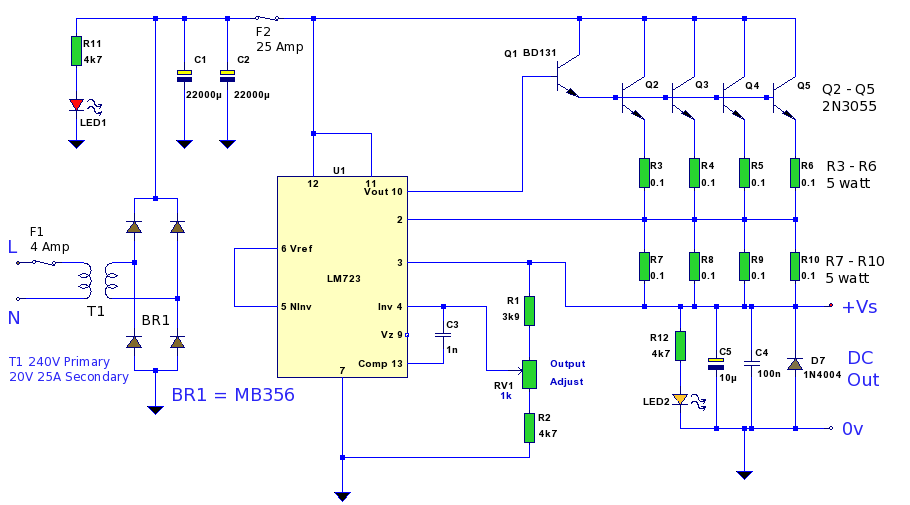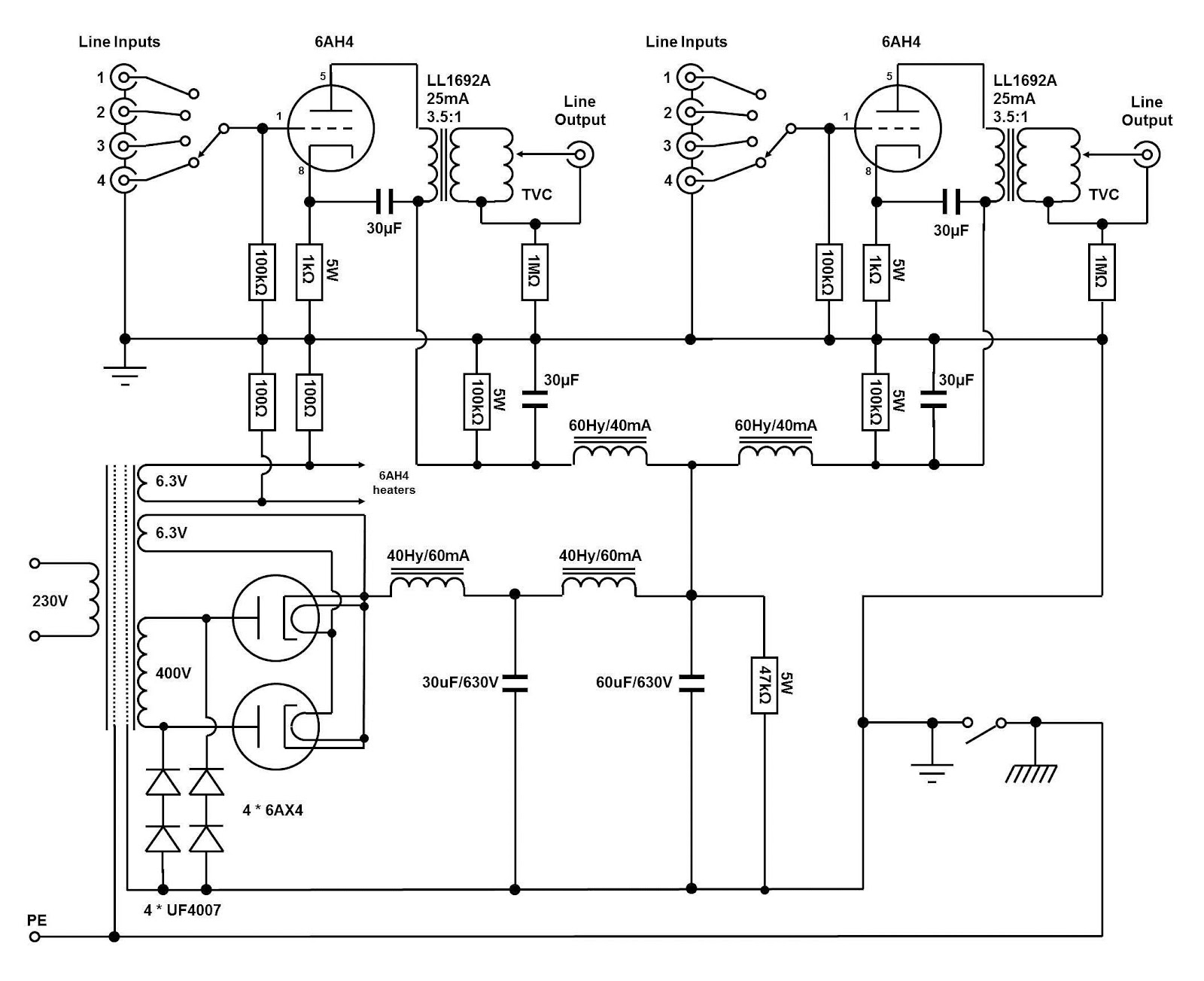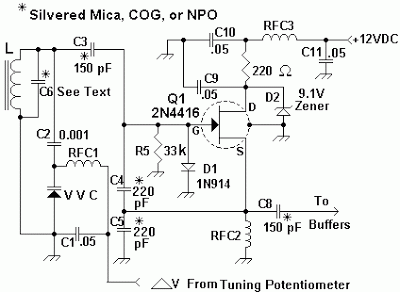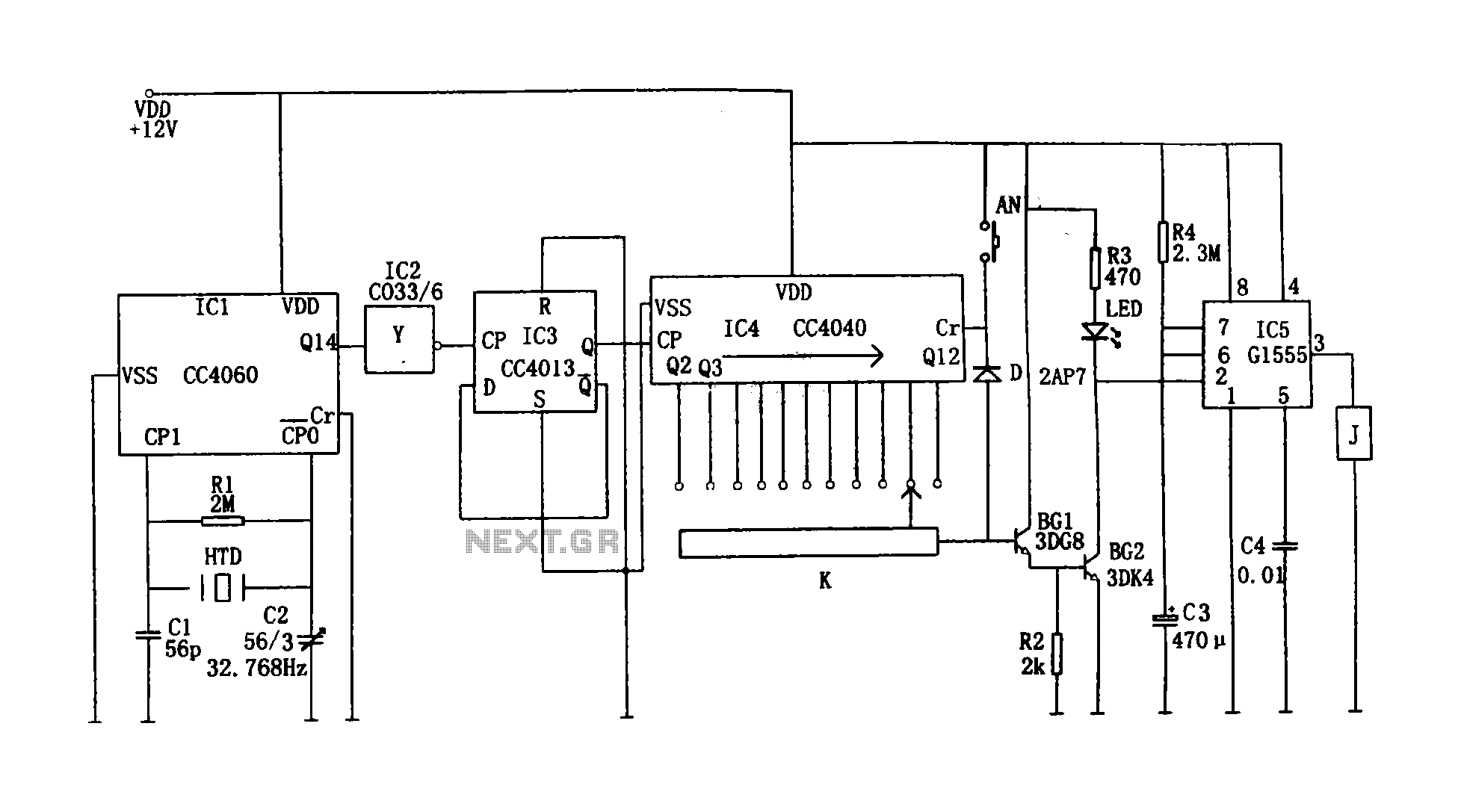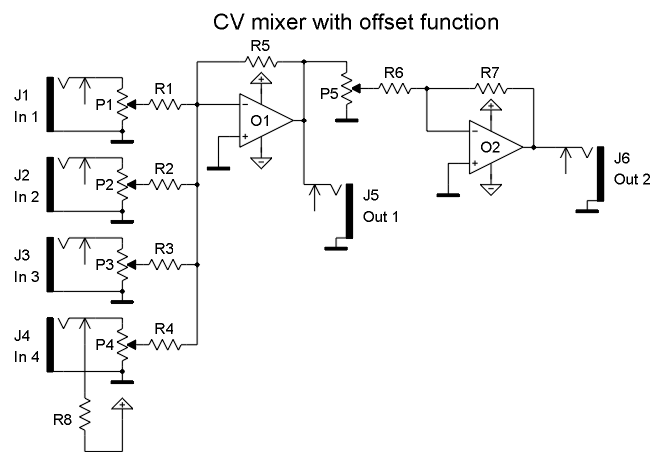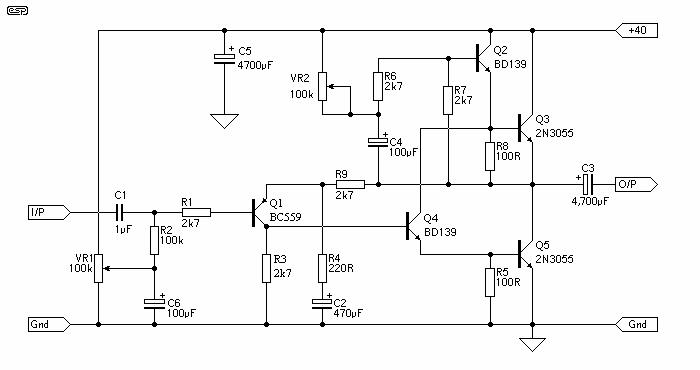
Ac Circuit Led Power Indicator
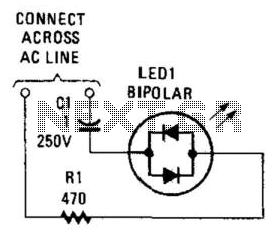
Many electronic circuits require an indication that they are powered. For most AC circuits, a neon lamp is the preferred device. A bidirectional tricolor LED can also be utilized if a capacitor is connected in series with the LED to limit the current flowing through it. A 1 µF, 250 Vdc capacitor, which has a reactance of 2,650 ohms at 60 Hz, is used in series with the LED to restrict the current to 43 mA. The impedance of the LED is low compared to the reactance of the capacitor, meaning that nearly all the impedance is attributed to the capacitor, with the added benefit of no energy loss from the capacitor. The power consumed by the LED is calculated as 1.175 V × 0.043 A = 50 mW, in contrast to the NE-2H neon lamp, which consumes 250 mW. For a 230 V application, a 0.47 µF, 400 Vdc capacitor should be used.
In the described circuit, the primary function is to provide a visual indication of power status in AC circuits. The use of a neon lamp is common due to its simplicity and effectiveness; however, the implementation of a bidirectional tricolor LED offers additional benefits, such as versatility in color indication based on the circuit's status.
The series connection of a capacitor with the LED is crucial for current limitation, which protects the LED from excessive current that could lead to failure. The choice of a 1 µF capacitor rated at 250 Vdc is appropriate for standard applications, as it provides sufficient reactance at 60 Hz to ensure that the current through the LED remains at a safe level of 43 mA. This current level is calculated based on the impedance of the capacitor, which dominates the circuit due to the low impedance of the LED.
The power calculation for the LED demonstrates its efficiency compared to traditional neon lamps. The LED operates at 50 mW, significantly less than the 250 mW consumed by the NE-2H neon lamp, making it a more energy-efficient choice. For higher voltage applications, such as those operating at 230 V, a capacitor with a value of 0.47 µF and a higher voltage rating of 400 Vdc is recommended to ensure safe operation and to maintain the desired current through the LED.
This circuit design not only provides a reliable indication of power but also enhances energy efficiency, making it suitable for modern electronic applications where power consumption is a critical consideration. The combination of a tricolor LED and a properly rated capacitor allows for a compact and effective solution for power indication in various electronic devices. Many electronic circuits need an indication that they are under power; for most ac circuits, a neon lamp is the device of choice. A bidirectional tricolor LED can be used if a capacitor is connected in series with the LED to limit the current through the LED. 1-Â¥, 250-WVdc capacitor, which has a reactance of 2 650 ohms at 60 Hz, is used in series with an LED to limit the current through the unit to 43 mA.
The impedance of the LED is low compared to the reactance of the capacitor, so nearly all the impedance will be caused by the capacitor with the added advantage of no energy loss caused by the capacitor. The power of the LED is 1.175 V 0,043 A = 50 mW compared to an NE-2H at 250 mW. For 230 V, use a 0.47-^F, 400-WVdc capacitor.
In the described circuit, the primary function is to provide a visual indication of power status in AC circuits. The use of a neon lamp is common due to its simplicity and effectiveness; however, the implementation of a bidirectional tricolor LED offers additional benefits, such as versatility in color indication based on the circuit's status.
The series connection of a capacitor with the LED is crucial for current limitation, which protects the LED from excessive current that could lead to failure. The choice of a 1 µF capacitor rated at 250 Vdc is appropriate for standard applications, as it provides sufficient reactance at 60 Hz to ensure that the current through the LED remains at a safe level of 43 mA. This current level is calculated based on the impedance of the capacitor, which dominates the circuit due to the low impedance of the LED.
The power calculation for the LED demonstrates its efficiency compared to traditional neon lamps. The LED operates at 50 mW, significantly less than the 250 mW consumed by the NE-2H neon lamp, making it a more energy-efficient choice. For higher voltage applications, such as those operating at 230 V, a capacitor with a value of 0.47 µF and a higher voltage rating of 400 Vdc is recommended to ensure safe operation and to maintain the desired current through the LED.
This circuit design not only provides a reliable indication of power but also enhances energy efficiency, making it suitable for modern electronic applications where power consumption is a critical consideration. The combination of a tricolor LED and a properly rated capacitor allows for a compact and effective solution for power indication in various electronic devices. Many electronic circuits need an indication that they are under power; for most ac circuits, a neon lamp is the device of choice. A bidirectional tricolor LED can be used if a capacitor is connected in series with the LED to limit the current through the LED. 1-Â¥, 250-WVdc capacitor, which has a reactance of 2 650 ohms at 60 Hz, is used in series with an LED to limit the current through the unit to 43 mA.
The impedance of the LED is low compared to the reactance of the capacitor, so nearly all the impedance will be caused by the capacitor with the added advantage of no energy loss caused by the capacitor. The power of the LED is 1.175 V 0,043 A = 50 mW compared to an NE-2H at 250 mW. For 230 V, use a 0.47-^F, 400-WVdc capacitor.
